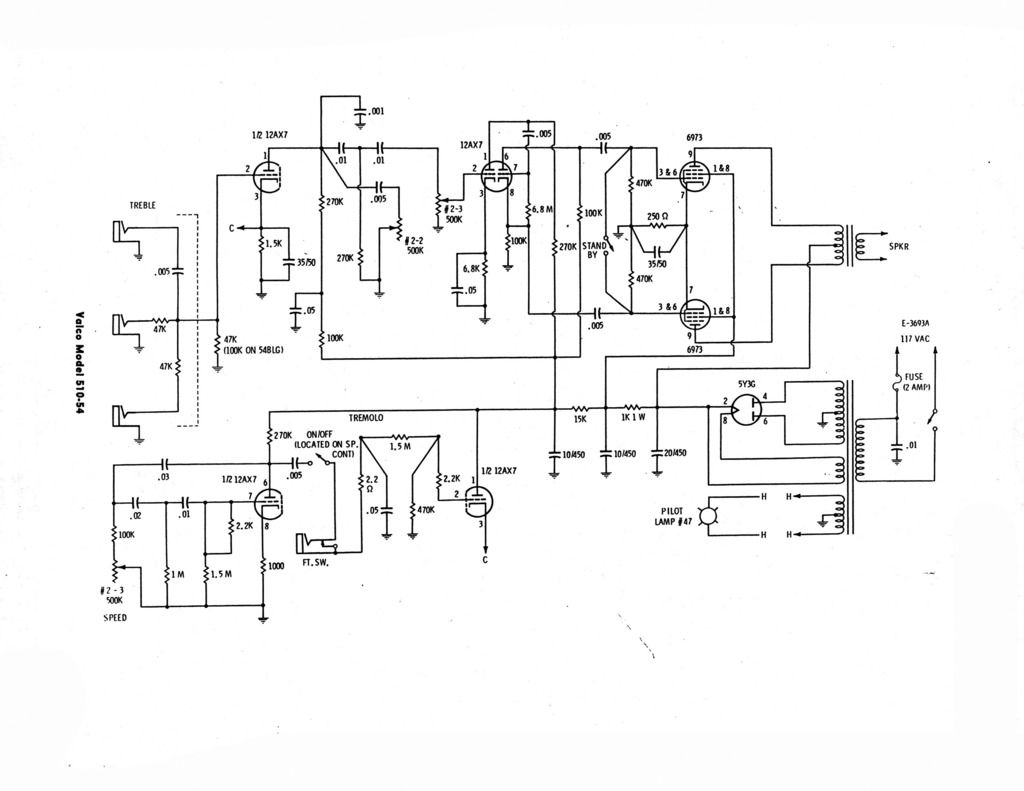I have a Gretsch 6156 that uses a different type of phase inverter than I am accustomed to (paraphrase).
Can anyone describe what they are doing in the below schematic ? I think it's a 'Type' of Cathodyne PI arrangement, but it seems like something else as well. The amp sounds fantastic, particularly after I increased the size of the power tube coupling caps from .005uf to .022uf, and the PI cathode Bypass cap from .05uf to 1uf (this added some needed Bass to the 12" Jensen), and the amp still sounds very clear and crisp, even in high gain clean boosted signal up-front.
Thanks in advance for any help !

Can anyone describe what they are doing in the below schematic ? I think it's a 'Type' of Cathodyne PI arrangement, but it seems like something else as well. The amp sounds fantastic, particularly after I increased the size of the power tube coupling caps from .005uf to .022uf, and the PI cathode Bypass cap from .05uf to 1uf (this added some needed Bass to the 12" Jensen), and the amp still sounds very clear and crisp, even in high gain clean boosted signal up-front.
Thanks in advance for any help !

Comment